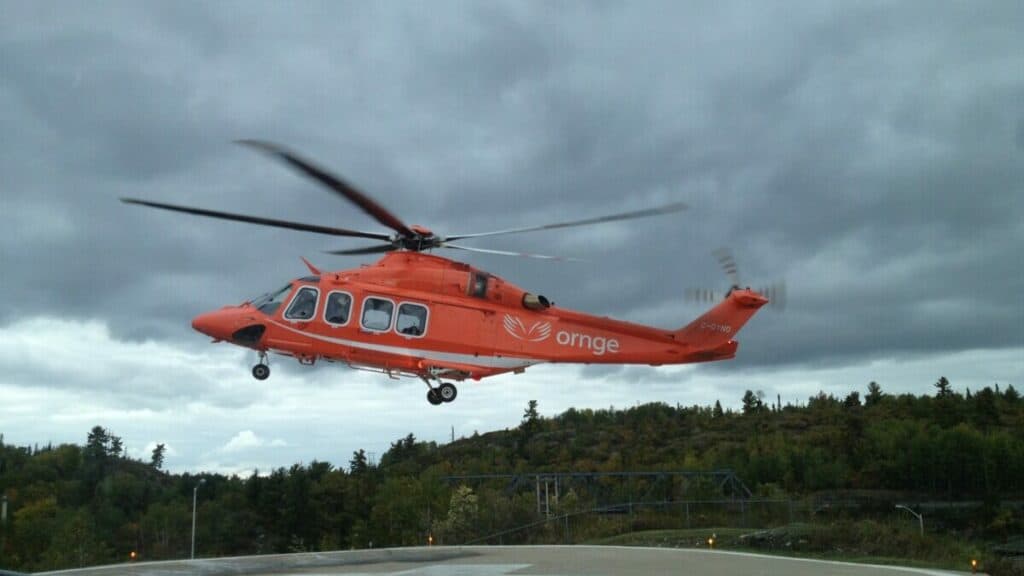
Helicopters are an incredible invention and if you are like me, there was a time before I became a pilot that I wondered just how a helicopter was able to lift off the ground and stay in a hover. Just what sourcery allowed these machines to do this?
The rotor blades of a helicopter are rotating wings that create lift. Lift is generated by the blade shape creating a lower pressure above each blade causing it to rise as it rotates. The pilot changes the pitch angle of each rotor blade to also deflect air downwards allowing for directional control.
As a young boy, the sight of a helicopter in flight was just pure magic and as I got older my understanding of the principles grew. Most people have some idea of how an airplane creates lift, but not a helicopter. This article was written to answer that question.
What Creates the Lift on a Helicopter?
To create lift helicopters main rotor blades use a difference in air pressure above and below each rotor to create lift as they rotate. By also adjusting the pitch angle of each main rotor blade they deflect air downwards which aids in the control of the aircraft from the pilot.
To create this lift the helicopter’s main rotor system can consist of 2,3,4,5,6 or even 8 main rotor blades that work as a whole when being rotated by the engine. To get air flowing over each wing (Rotor Blade) the engine/s of the helicopter drives a main transmission that rotates each blade around a central mast, as opposed to an airplane that has to push its wing through the air in a linear path.
This is why you may have heard the terms:
- Rotary-Wing = Helicopter
- Fixed-Wing = Airplane
To create lift each main rotor blade works on 2 sets of physics:
- Pressure Difference
- Air Deflection
1. Pressure Difference
To create Lift, any wing is designed so its shape creates a lower pressure above it and a higher pressure below once it has air flowing around it. Airplanes push their wings straight through the air and helicopters rotate their wings through the air.
Because air pressure is always trying to reach equilibrium, the high-pressure area of air will always move towards the low-pressure area, if a wing is in this area of air movement it will be taken along for the ride. This is Lift.
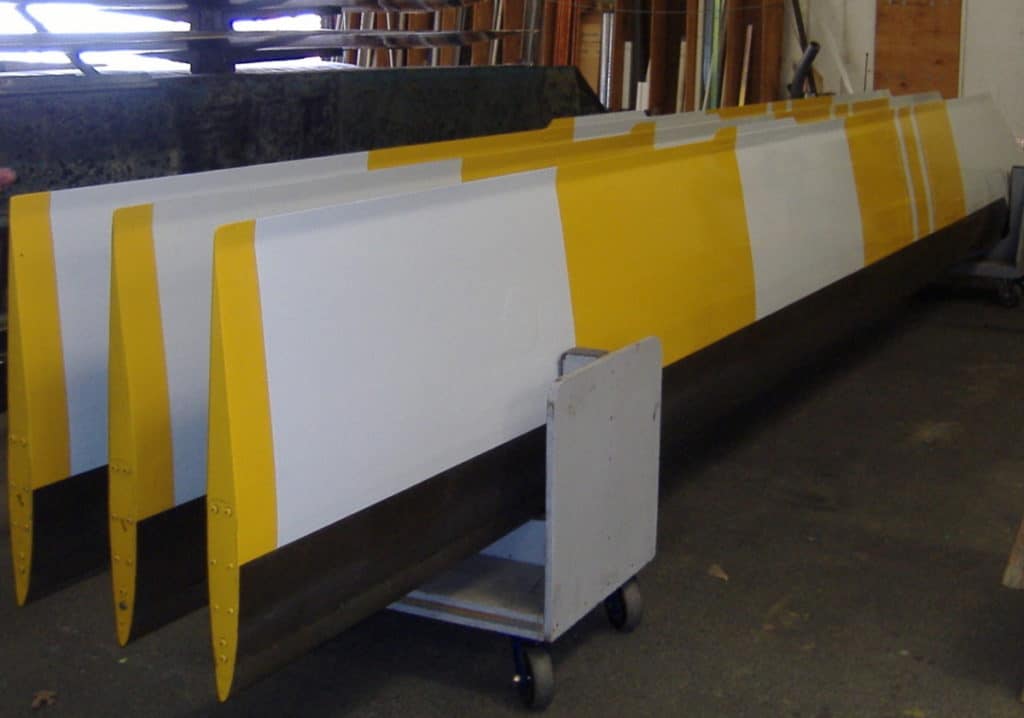
This is the opposite of racecars that design the wings on their cars to use that lifting force to push the car down onto the track to increase grip. Apparently, there is enough downforce being generated on a Formula 1 car that in theory, it could drive upside-down along the roof of a tunnel!
No matter which way the designers intend the pressure differential to work, as long as air is flowing over a wing or a combination of wings a difference in air pressure is created. The way they shape the wing is what gives it the lifting characteristics.
If you take a close look at the main rotor blades above you can see that the upper surface of each rotor blade (Painted side you can see) has a slightly different shape profile to that of its underside. Look at the tip of the blade for easier confirmation.
The physics behind the rotor blade shape is based on Bernoulli’s Principle.
Learn More…
Try These Articles:
* What Is A Helicopter Blade Made of? It Used To Be Wood!
* Can Helicopters Fly at Night? A Pilot Tells All!
Bernoulli’s Principle
Bernoulli’s Principle states that as the speed of a fluid or parcel of air increases, its pressure decreases.
The helicopter designers use this principle to make the upper portion of each rotor blade have a larger surface than the lower portion. For physics fundamentals that are way beyond the scope of this article, let’s just say that when air splits around a wing it wants to meet back up with the same parcel of air it split from when it first hit the wing.
For the parcel of air traveling over the upper side of the main rotor blade it has to travel further, it therefore, has to travel faster than its underside counterpart to ensure they meet up at the same time as they leave the back of the wing.
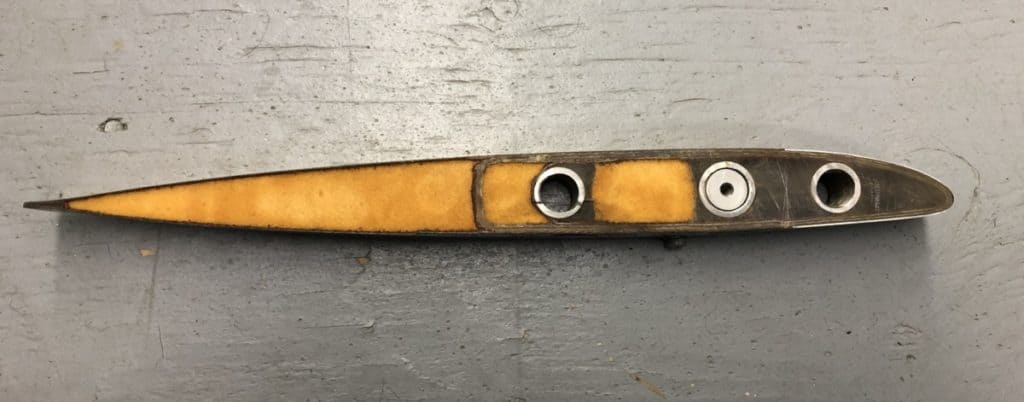
This increase in velocity is what creates the lower pressure on the upper surface of the wing/rotor blade and causes the rotor blade to rise. This is the first part of how a helicopter creates Lift.
The second part is Air Deflection.
2. Air Deflection
When you were a kid did you ever stick your hand out the window of a moving car? If your palm was flat to the ground your hand would stay in the same place, but when you began to turn your thumb up towards the sky and your palm followed, your hand would begin to rise. This is Air Deflection.
The physics behind this is based on Newton’s Third Law of Motion:
“For Every Action, There is an Equal and Opposite Reaction”
Because your hand was moving forwards through the air it came into contact with billions of air molecules. As these molecules touched your hand they bounced off and were deflected downwards, but in doing so they transferred some of that moving energy into your hand, thus making it move upward and backward.

Join My Newsletter & Get Great Tips, Information and Experiences To Help You Become a Superb Pilot!
It’s a bit like the paddle of a canoe. The force of being placed on the paddle to move it back through the water propels the canoe forwards.
The main rotor blades are propelled by the engines and the rotor blades are deflecting the air molecules that come into contact with them.
In a helicopter, each main rotor blade changes its pitch angle in relation to its connection to the main rotor hub. As the blade increases its pitch, it begins to deflect air downwards. The more its pitch angle increases, the more air molecules it deflects downwards – until its pitch angle increases too far that it stalls.
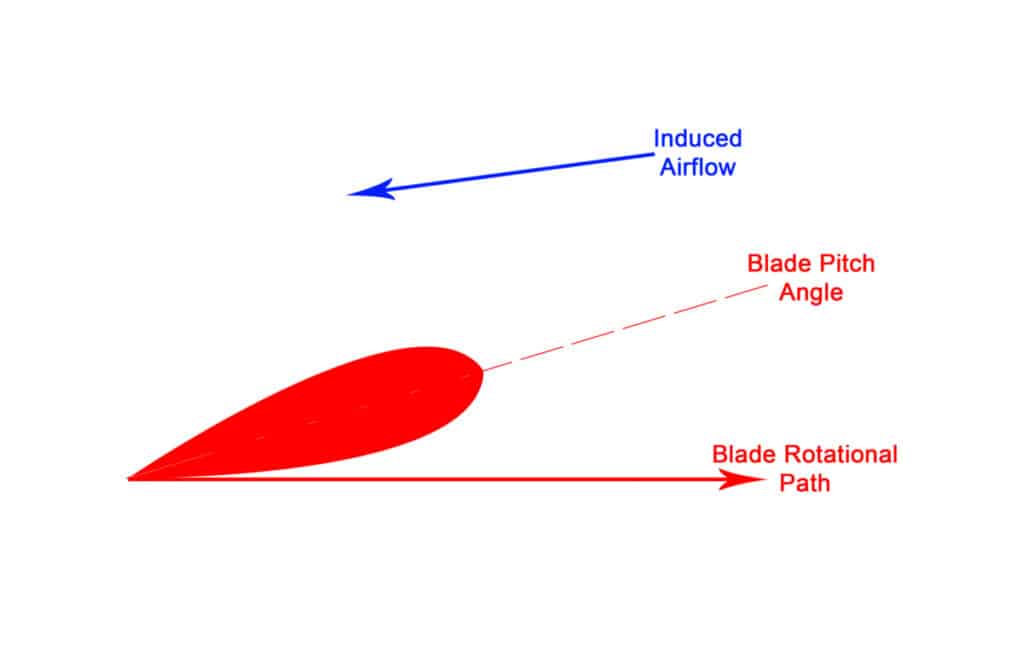
The main rotor Blade’s Rotational Path is the path the blade follows as it rotates around the main rotor mast.
The Blade Pitch Angle is the angle of the blade compared to it being sat with zero angle. This is what is controlled by the pilot.
The Induced Flow is the direction of the air coming onto the blade. If the helicopter is climbing the induced flow is coming from above. If it’s descending it’s coming from below etc.
To keep things simple, think of the main rotor blades as a complete disk when they are turning:
If the pitch of the rotor blade was increased when it’s out the left side of the helicopter it would force that blade to rise. This causes the helicopter to bank to the right.
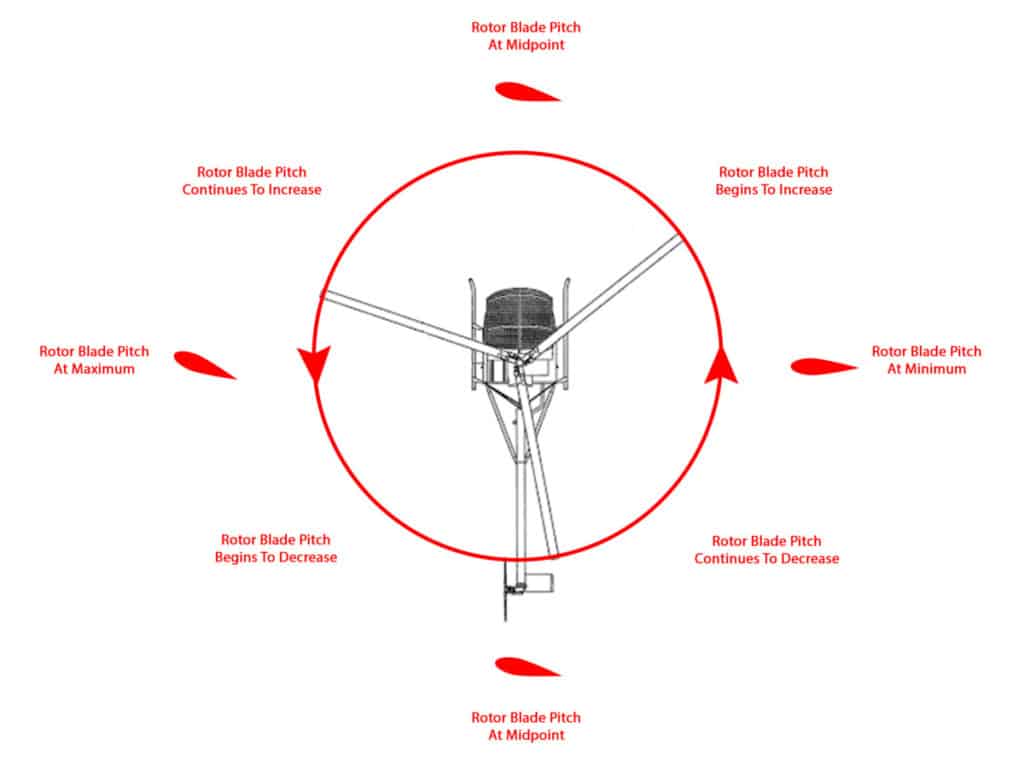
If the pitch of the rotor blade was increased when it’s out the right side of the helicopter it would force that blade to rise. This causes the helicopter to bank to the left.
If the pitch of the rotor blade was increased when it’s out the rear of the helicopter it would force that blade to rise. This causes the helicopter to drop its nose and accelerate.
If the pitch of the rotor blade was increased when it’s out the front of the helicopter it would force that blade to rise. This causes the helicopter to raise its nose and accelerate.
If the pitch on ALL the main rotor blades is increased at the same time the helicopter climbs.
If the pitch on ALL the main rotor blades is decreased at the same time the helicopter descends.
This is the basis of how Air Deflection is used to control how a helicopter is flown without going down a rabbit hole of physics and aerodynamics!
You can see the pitch angle of a blade changing during each rotation around the mast in the video below:
Learn More…
Try These Articles:
* Helicopter Tail Rotors – The Different Types Explained
* How Much Can a Helicopter Lift? 20 Helicopters Compared!
How Does Lift & Weight Affect a Helicopter?
To raise a helicopter off the ground, it needs to generate more Lift than the Weight of the helicopter. To remain in a hover the Lift must equal the Weight of the helicopter. To descend, the Lift must be less than the Weight of the helicopter. The pilot controls this with the Collective control.
It’s pretty simple when you think about it. If a helicopter weighs 5000lbs/2268Kg, it must generate over 5000lbs/2268Kg of lift to allow it to climb. The more a helicopter weighs, the more lift is needed to get it off the ground.
This is why aircraft are made as light as possible!
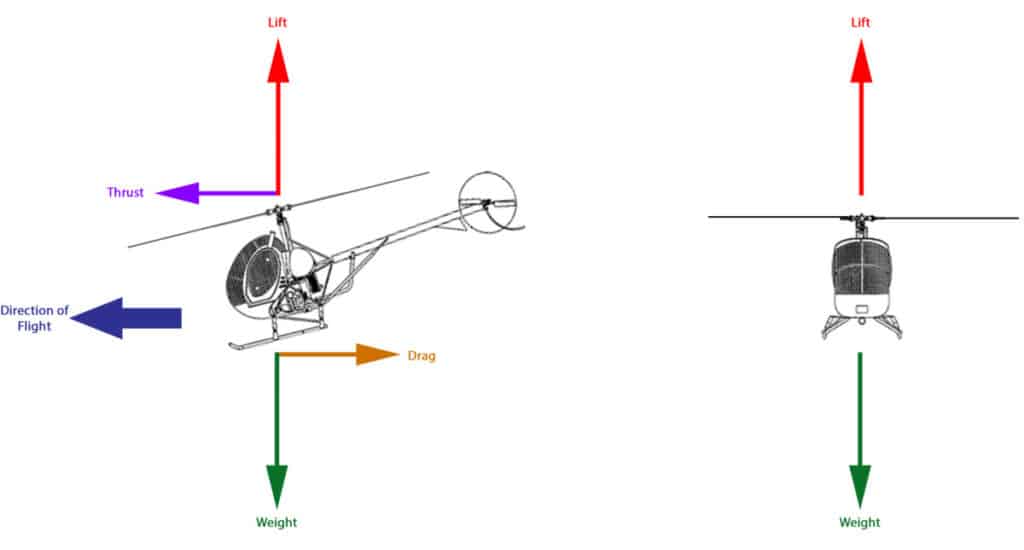
When in a stable hover the helicopter is neither climbing nor descending.
Lift = Weight
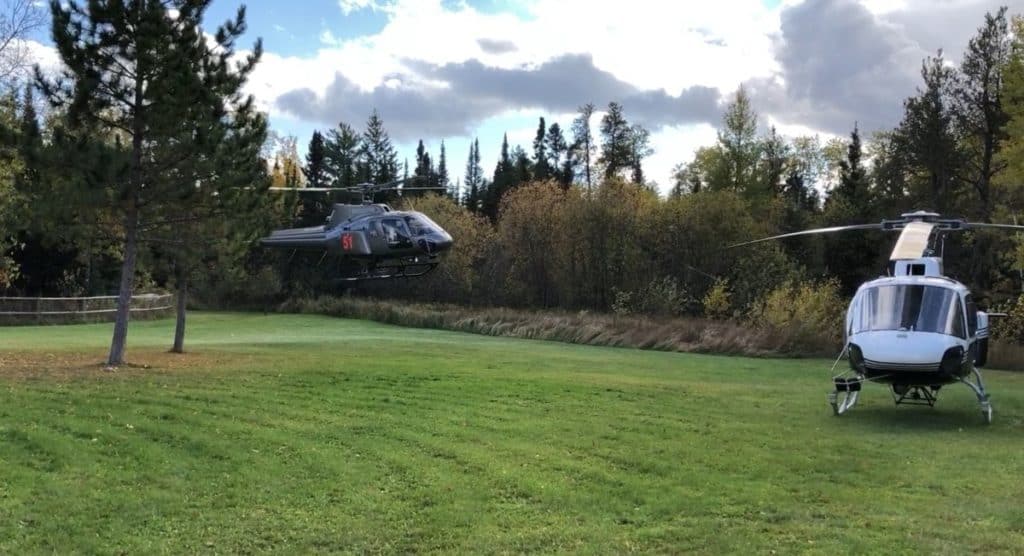
When in a climb the helicopter is producing more lift than the weight of the helicopter.
Lift > Weight
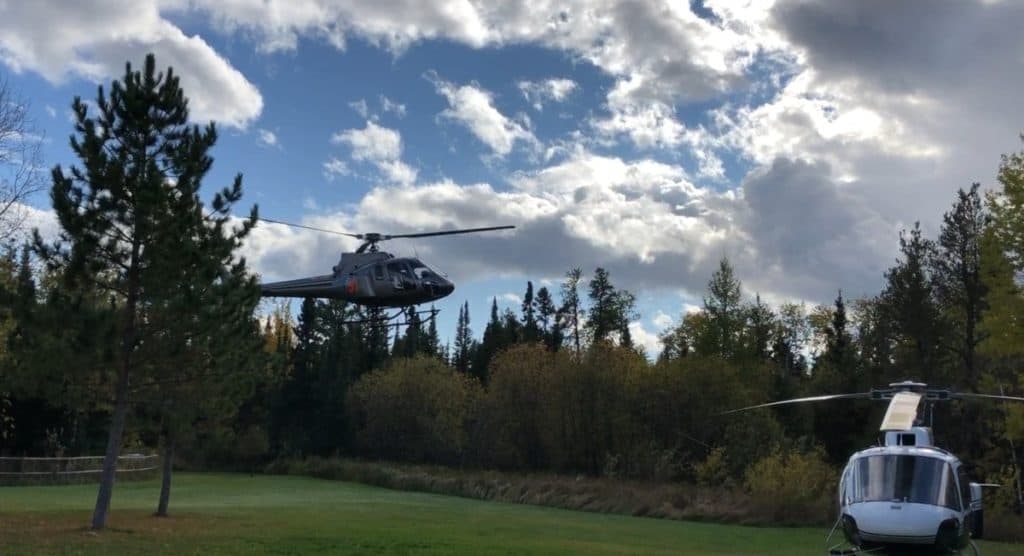
When in a descent the helicopter is producing less lift than the weight of the helicopter and gravity pulls it down.
Lift < Weight
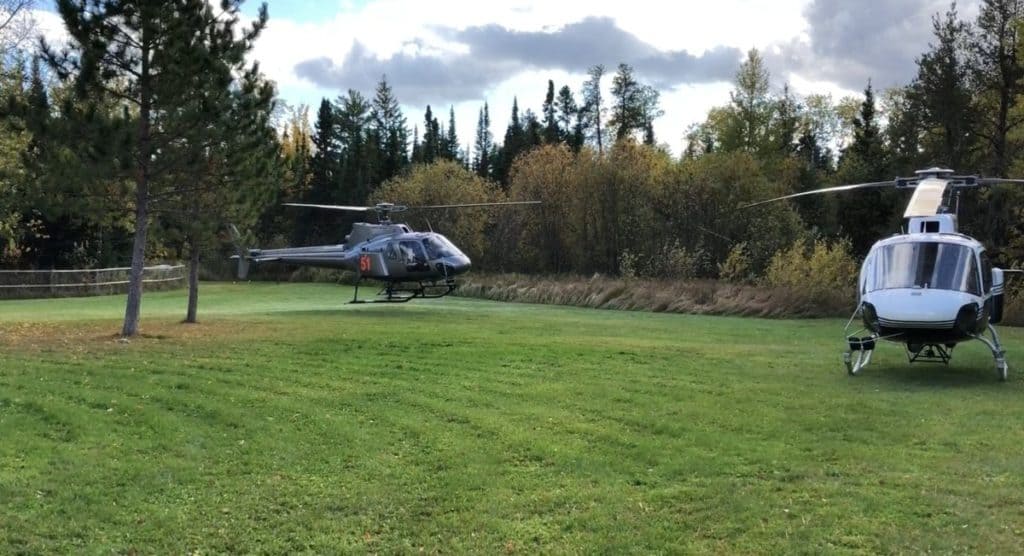
To control how much lift a helicopter generates the pilot uses the Collective Lever. The Collective control increases and decreases the pitch angle of all the main rotor blades together at the same time (Collectively). This deflects air downwards by the same amount in every area of the main rotor disk.
By doing this the helicopter rises vertically without any drift from its original spot over the ground (unless the wind decides to join in).
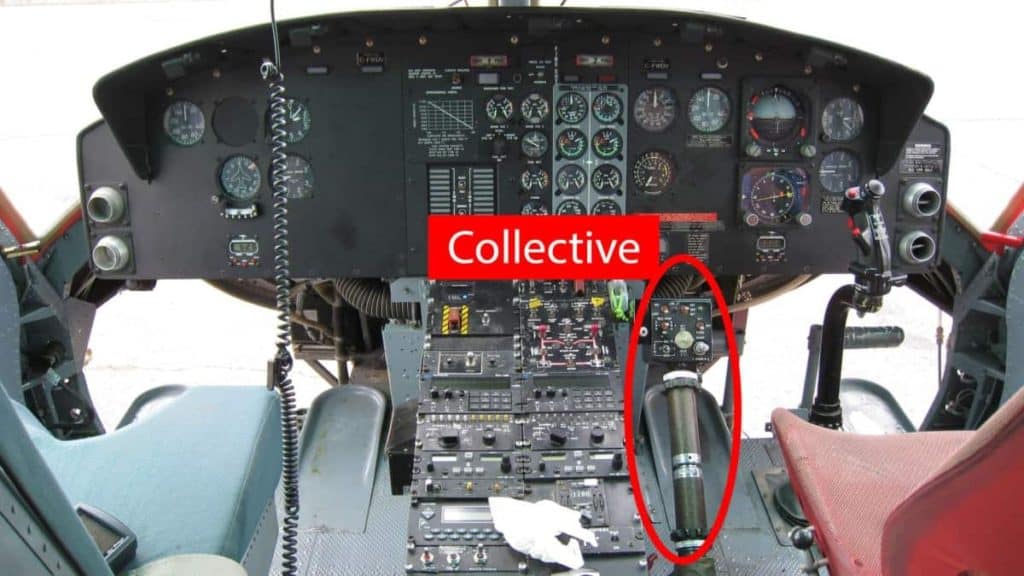
To climb, the pilot pulls up on the Collective and increases the pitch angles.
To descend, the pilot pushes down on the Collective and decreases the pitch angles.
To hover the pilot maintains the position of the Collective control.
The more pull on the Collective and the speed at which it is pulled, the faster the lift is generated and the faster the helicopter climbs.
However, as the pitch angle of each main rotor blade increases, the amount of drag it creates also increases. This drag will begin to slow the rotational speed of the blade through the air if left without correction.
To maintain the correct main rotor RPM, as the pilot raises the Collective, a mechanical or electronic connection to the engine also increases its power by opening the throttle. By matching the power to the drag, the helicopter is able to maintain the RPM of the main rotor system.
Once the pitch angle of the rotor blades creates more drag than what can be overcome by the power of the engine/s, this is the limiting point the pilot must not cross or they will start to have a dropping main rotor RPM which will cause the helicopter to descend.
If the rotor RPM is allowed to drop too far, then the helicopter falls out of the sky like a rock. Gravity ALWAYS wins!


